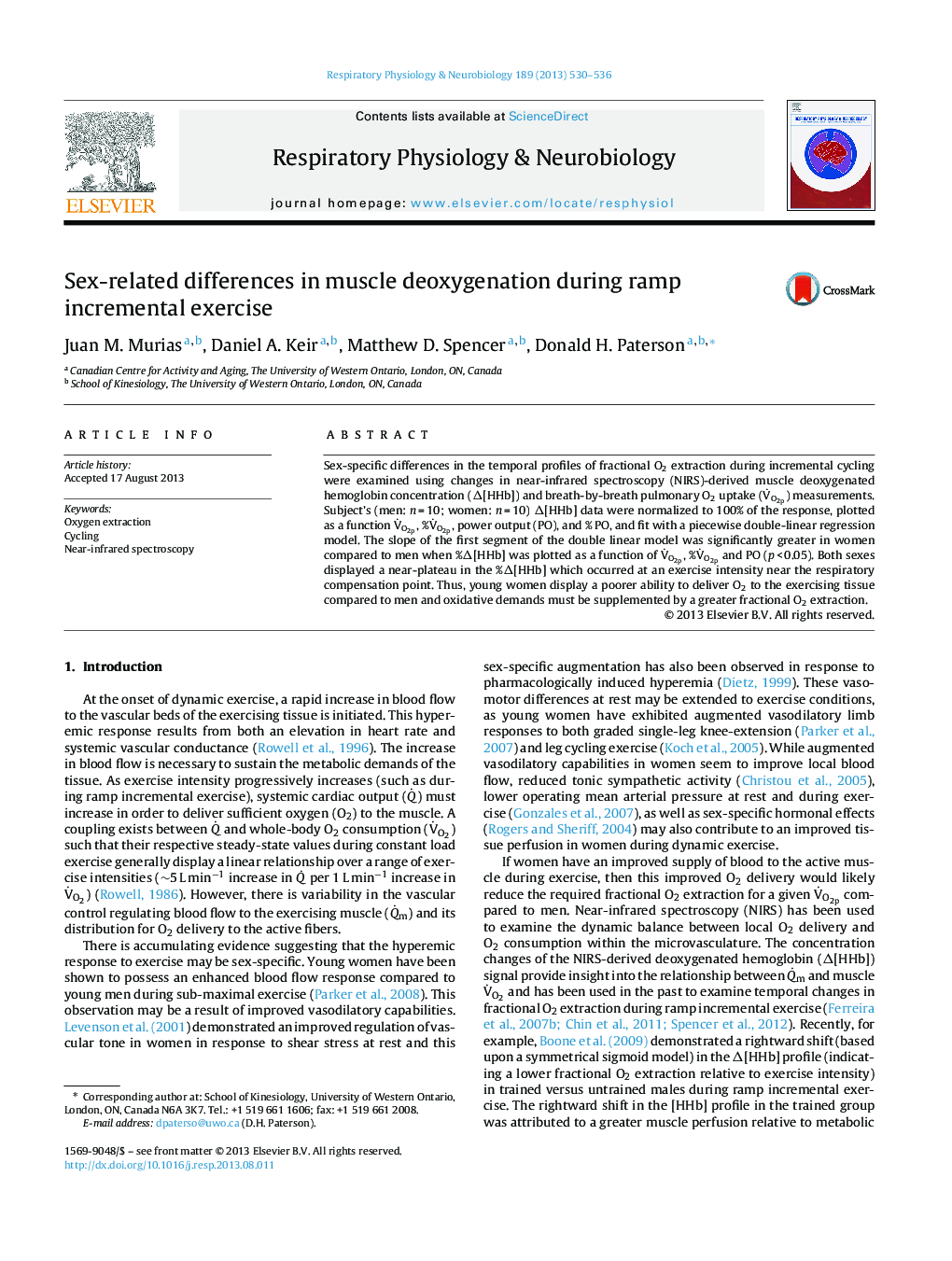| Article ID | Journal | Published Year | Pages | File Type |
|---|---|---|---|---|
| 5926047 | Respiratory Physiology & Neurobiology | 2013 | 7 Pages |
â¢Local O2 extraction was larger in women than in men during ramp incremental exercise.â¢The HHb signal breaking point was associated with the respiratory compensation point.â¢Results suggest poorer microvascular perfusion in women than men during ramp tests.
Sex-specific differences in the temporal profiles of fractional O2 extraction during incremental cycling were examined using changes in near-infrared spectroscopy (NIRS)-derived muscle deoxygenated hemoglobin concentration (Î[HHb]) and breath-by-breath pulmonary O2 uptake (VËO2p) measurements. Subject's (men: n = 10; women: n = 10) Î[HHb] data were normalized to 100% of the response, plotted as a function VËO2p, %VËO2p, power output (PO), and % PO, and fit with a piecewise double-linear regression model. The slope of the first segment of the double linear model was significantly greater in women compared to men when %Î[HHb] was plotted as a function of VËO2p, %VËO2p and PO (p < 0.05). Both sexes displayed a near-plateau in the %Î[HHb] which occurred at an exercise intensity near the respiratory compensation point. Thus, young women display a poorer ability to deliver O2 to the exercising tissue compared to men and oxidative demands must be supplemented by a greater fractional O2 extraction.
